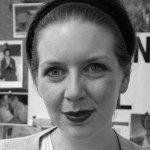A professional life spent tackling clients’ problems helps you see the brighter side of the financial downtown and challenging markets

A professional life spent tackling clients’ problems helps you see the brighter side of the financial downtown and challenging markets
A professional life spent tackling clients’ problems helps you see the brighter side of the financial downtown and challenging markets.
NEW YORK – Patti Pao loves problems, those really “big hairy problems” (her words). Pao found herself the only person in her Harvard Business School class that didn’t want to work as an investment banker or FMCG marketer, and was left wondering what to do with this impulse. While the rest of her MBA class prepped themselves for Wall Street interviews, Pao was looking in another direction.
The solution, she found, was in her love of fashion and beauty. Devotion borne in part from a Chanel suit she purchased at 18, having saved up for five years. It may have led her to have little else to wear and even less to eat during her college years, but it also helped Pao find a professional focus. Her company, retail consulting firm The Pao Principle, specialises in helping to turn around the fortunes of clients by repositioning, repackaging and reformulating, and she’s worked with brands including Guerlain, Avon and Elizabeth Arden as well as advising on China’s luxury market.
This thirst for problem-solving meant that Pao greeted the recent recession with open arms. Well, not quite, but she is quick to point out the positive outcomes for the luxury industry.
Pao believes that manufacturers are renewing focus on producing high quality goods after a period of getting away with lesser products at premium prices. For the five years prior to 2009, deals were done regardless, but now there is a new commitment to – or, more bluntly, a necessity for – quality and an increased focus on design and craftsmanship, says Pao. The recession has led the luxury industry to adjust their business model in order to present consumers with tangible value as well as nudging luxury goods manufacturers to rethink in more creative ways and that’s no bad thing. She praises Coach for its ability to implement the lessons learned and provide well-priced high quality merchandise frequently, but in limited quantities.
In 2009 Pao set up the China Luxury Panel, with the aim of helping her luxury and beauty clients to enter the China market or improve their performance. The panel of 400 Mainland Chinese HNWIs gauges attitudes and usage of luxury goods.
There’s a lack of cultural understanding, she says, giving the example of a client keen to implement a social media campaign on Facebook, while failing to realise that the site is banned by the Chinese government. Pao stresses the importance of family, advising clients that the opinions of friends and family can be the most important source of information for consumers of luxury goods and beauty. More obvious but yet unresolved issues also play their part. One big hurdle for many luxury marketers is that they need to speak and write Chinese fluently. She also believes that manufacturers need to understand that the real growth is coming from second and third tier cities, and warns that those that do not move quickly will get left behind.
With all this to contemplate and advise on, it’s safe to assume that Pao’s craving for a challenge will be kept at bay for the near future at least.










